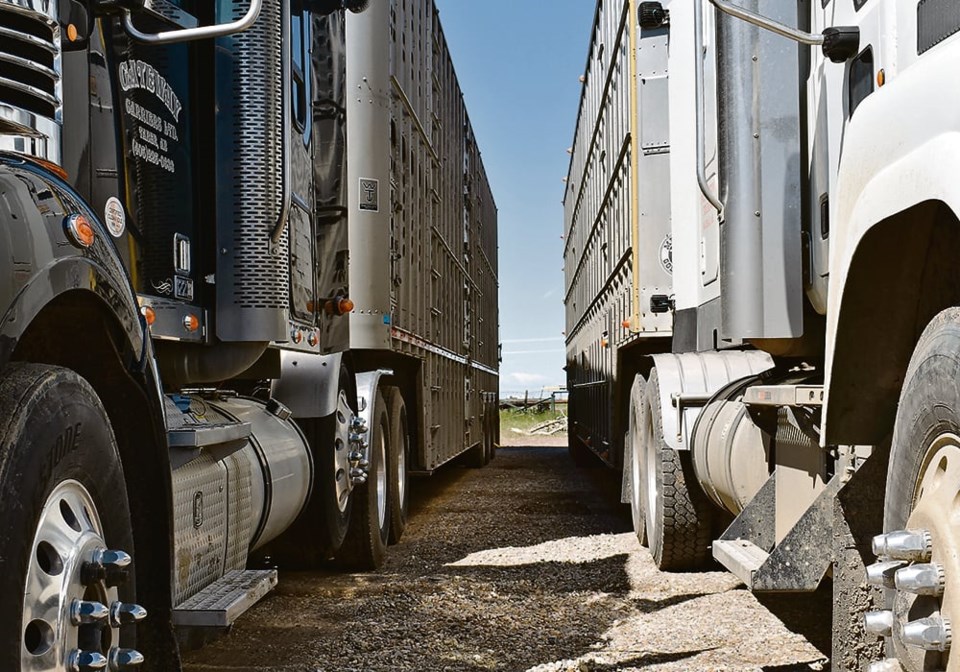WESTERN PRODUCER – There are “no smoking guns” to blame for bird flu spread in U.S. dairy cattle, but a number of farm practices may have collectively helped the virus move, according to an expert from the U.S. Department of Agriculture.
A USDA survey of dairy farms found that, of participating farms in three states, 51 per cent used trucks or trailers shared with other farms to move cattle. Fifty to 85 per cent had frequent visitors who had contact with cattle.
“We can’t say this is exactly how the virus made its way onto the premises, but we can take a look at those risky activities that are happening on-farm to get an idea of how this might be spreading around,” said Julie Gauthier, who spoke on behalf of the USDA during a June 24 webinar.
The USDA had found highly pathogenic avian influenza in dairy cows and one alpaca farm across 12 states as of June 21. The virus has not been detected in Canadian dairies.
The webinar, hosted by the Iowa-based Council for Agricultural Science and Technology, provided updates on the U.S. outbreak of dairy bird flu cases, what the USDA is doing to monitor the disease and halt spread and how food producing sectors have been affected.
The USDA has been sending epidemiology “strike teams” to do in-depth interviews with dairy producers, Gauthier said.
“What we’ve found is that we’ve got a lot of risk factors that we could associate with moving the virus from place to place.”
Movement of lactating dairy cattle was one of the biggest issues identified for interstate spread. The USDA found that 27 per cent of producers who were surveyed had received cattle on their farms in the 30 days before the herd first started showing clinical signs of bird flu.
“It was not unusual for lactating dairy cows to be moved from farm to farm,” Gauthier said.
Of those farms using shared trucks or trailers, “about half of those might be cleaned before using them again to transport cattle. Lactating dairy cows, particularly older ones, have been identified as particularly susceptible to the flu, reducing their milk production in the process.”
Shared workers were another potential vector.
“Workers would go from dairy to dairy,” said Gauthier. “They were also working at … poultry premises as well, which is another really good way to carry that virus on our hands, our clothing, our shoes and bring that to a new farm.”
Gauthier emphasized the need for robust biosecurity, particularly measures laid out in the Secure Milk Supply Plan, which has protocols set by the USDA in case of foot-and-mouth disease infections.
The voluntary plan places heavy emphasis on enhanced biosecurity. Practices include animal surveillance, bulk tank milk surveillance, testing cattle prior to transport, reducing transport as much as possible and identifying potential interconnections between operations.
“We need to report if we’re seeing cattle that are showing signs that could be avian influenza and we need to conduct an investigation. Our state and federal animal health authorities are ready to investigate these cases and determine whether or not the cow is infected,” said Gauthier.
“We need to take a look at the interconnections between these farms: sharing workers, workers living in the same household and maybe working at different dairies. That’s a risk. Identify as many of these connections as possible so that we can determine the ways that this virus is making its way from farm to farm.”
Gauthier also outlined the USDA’s new, voluntary herd status program for producers who need to move cattle. Eligibility is contingent on testing cattle and bulk tank milk weekly and receiving a negative HPAI diagnosis over three weeks. Herds can then receive a “monitored unaffected” status designation.
That status will allow producers to ship cows on their preferred schedule and without testing individual animals. Producers must continue weekly bulk tank milk testing in that herd to maintain their status.
Gauthier said the USDA expects to find additional cases of HPAI in dairy cattle over the next few weeks as testing ramps up. She’s hoping the government’s financial aid program, which will purportedly compensate herds affected by HPAI for up to 90 per cent of lost milk production, will encourage herd owners to test and receive a status designation.




